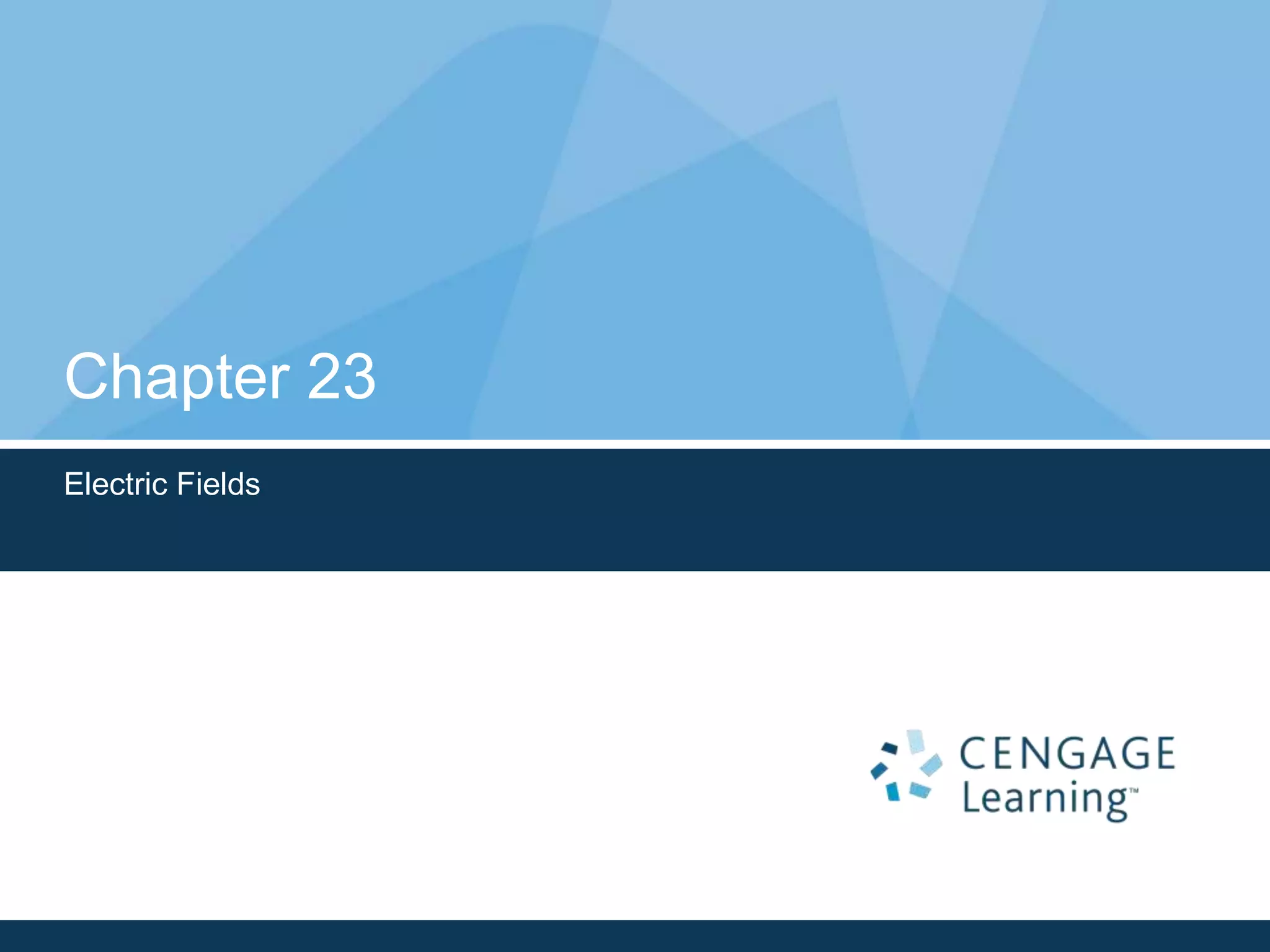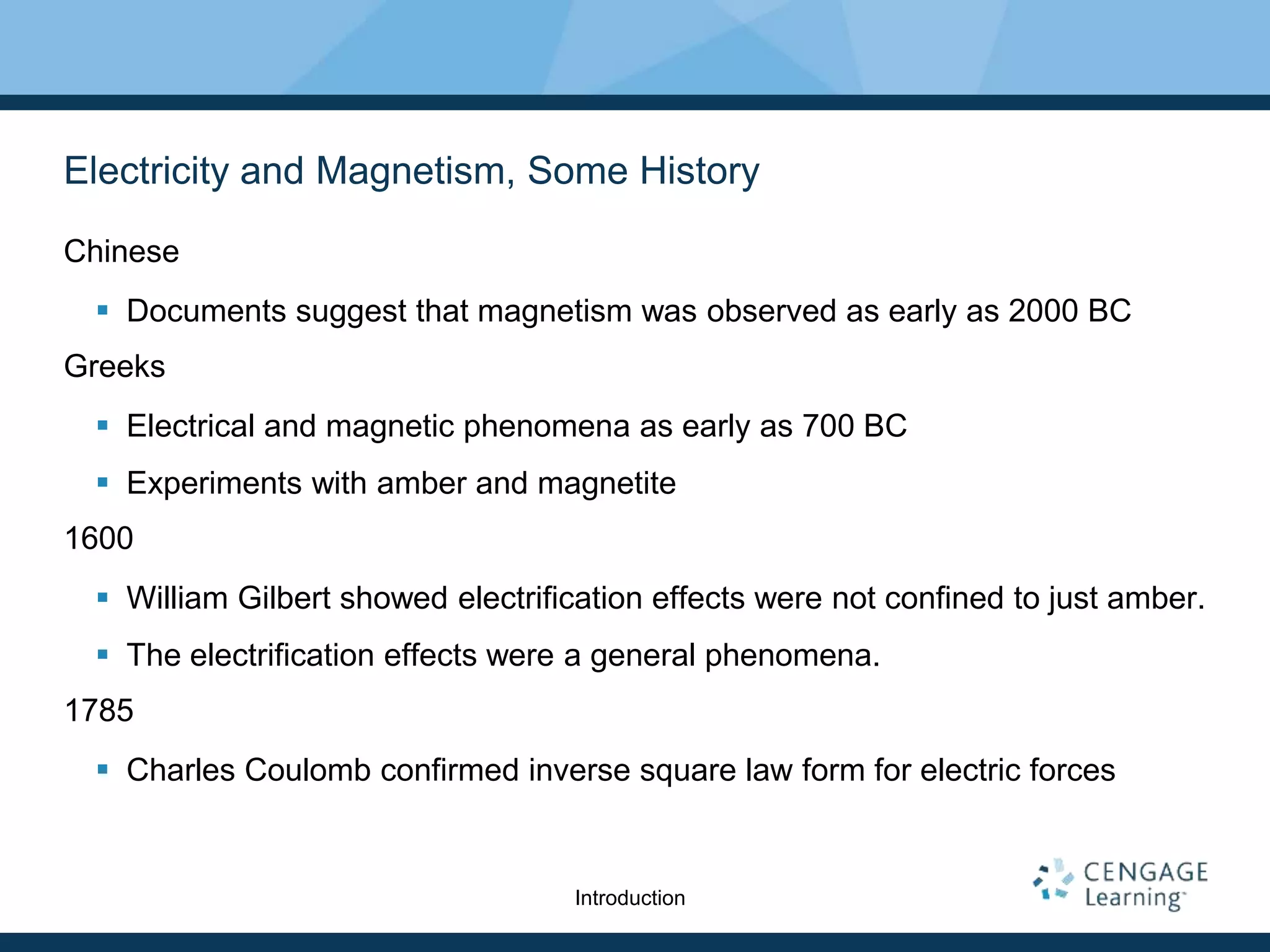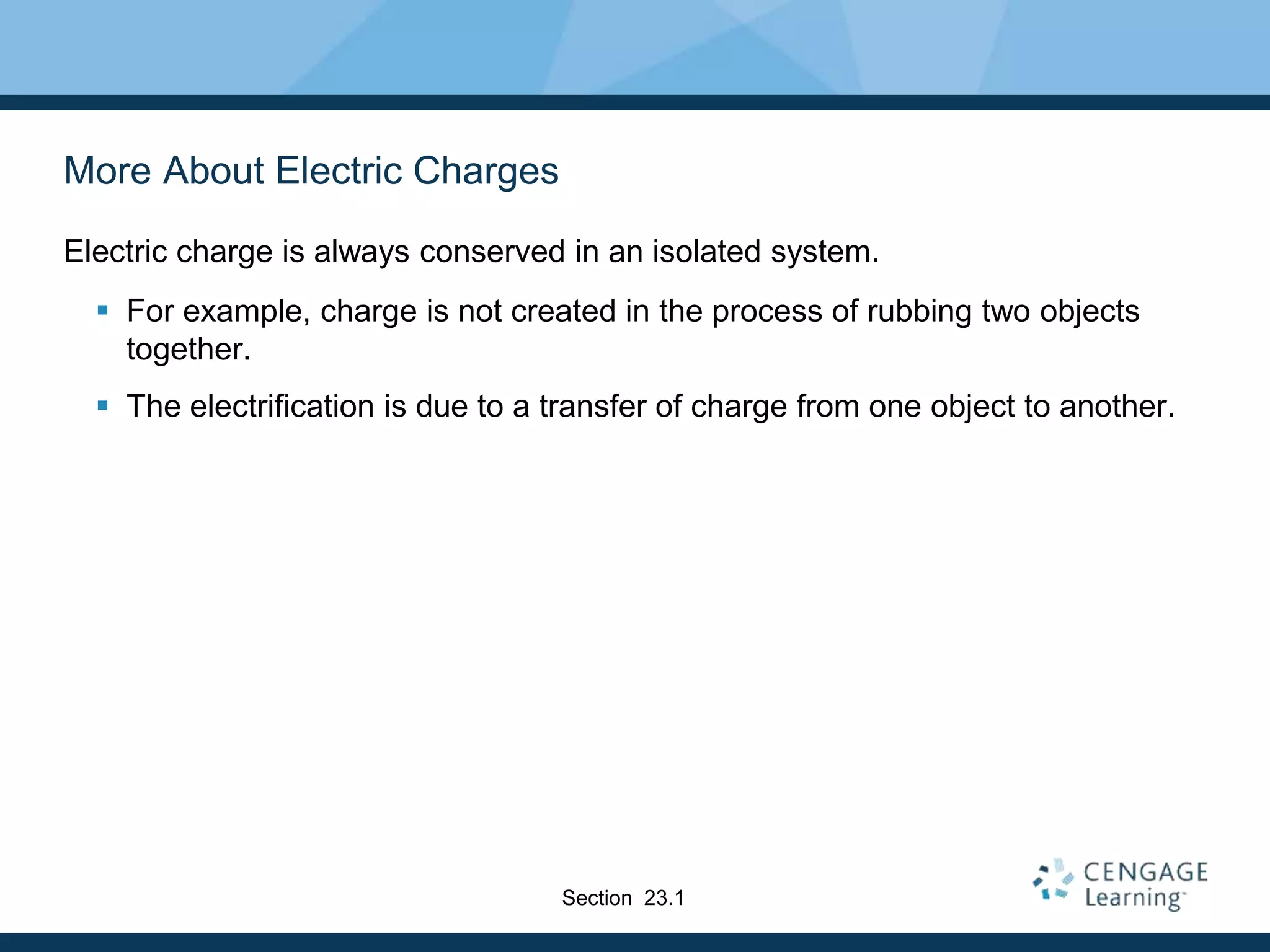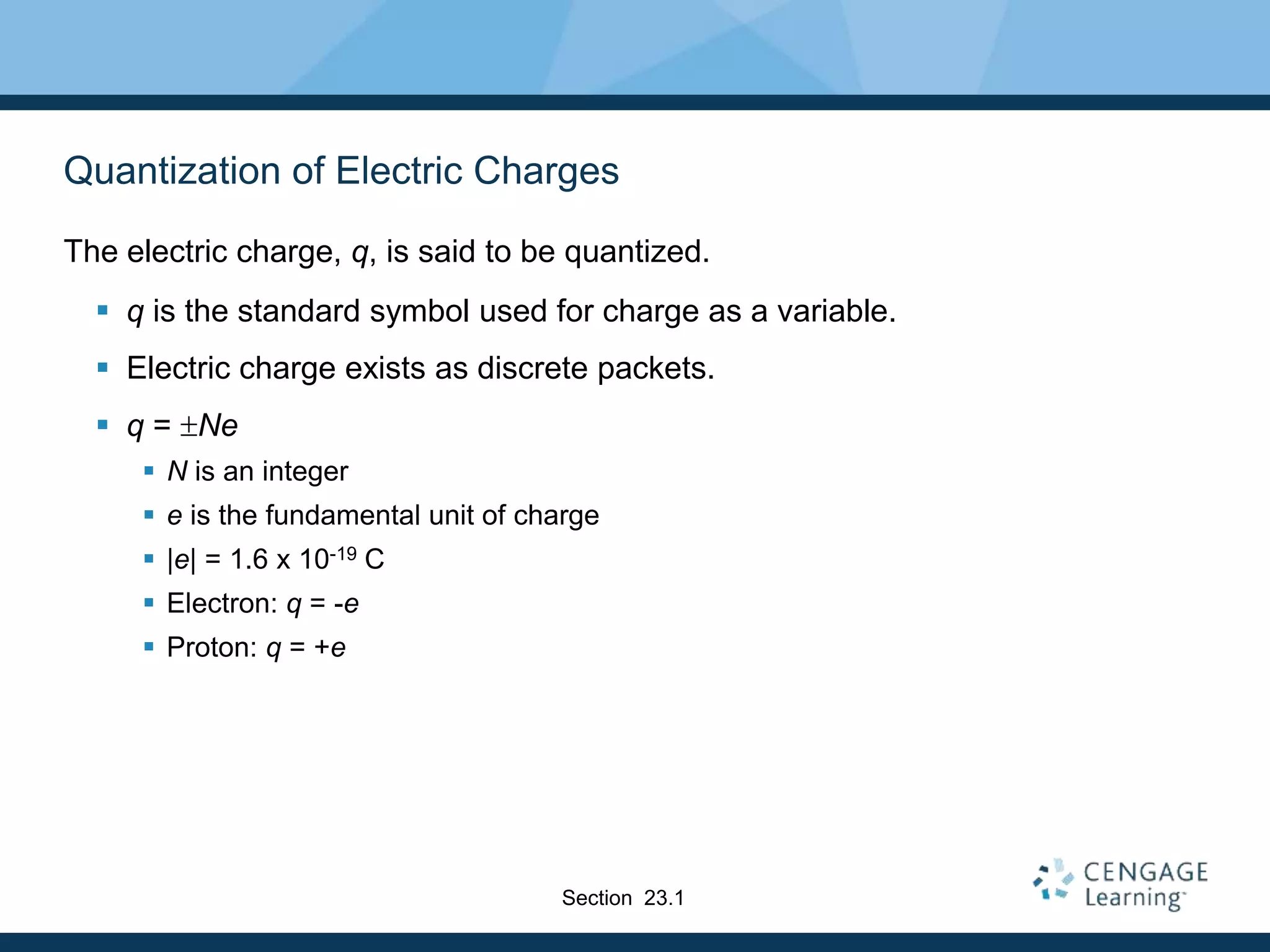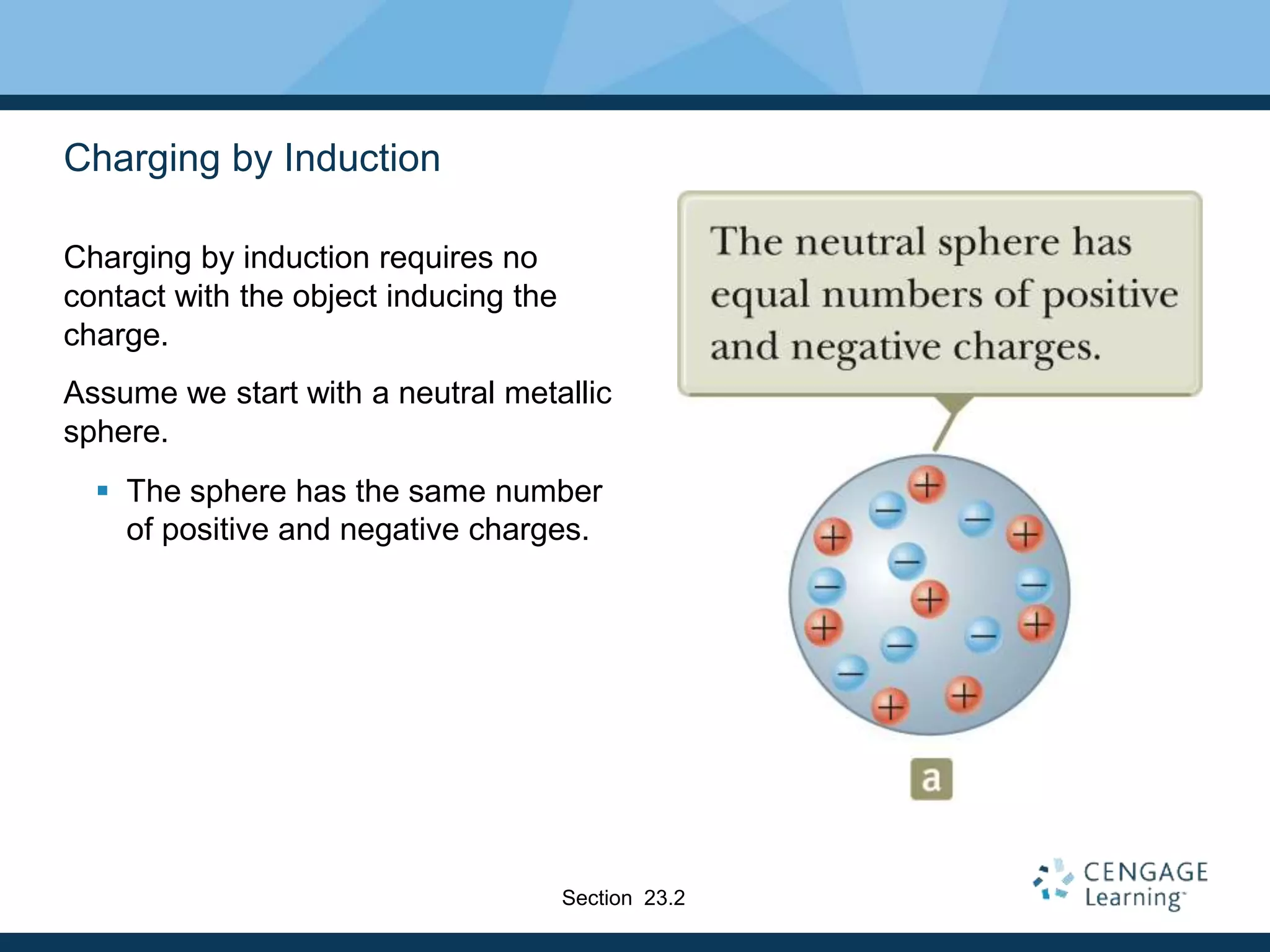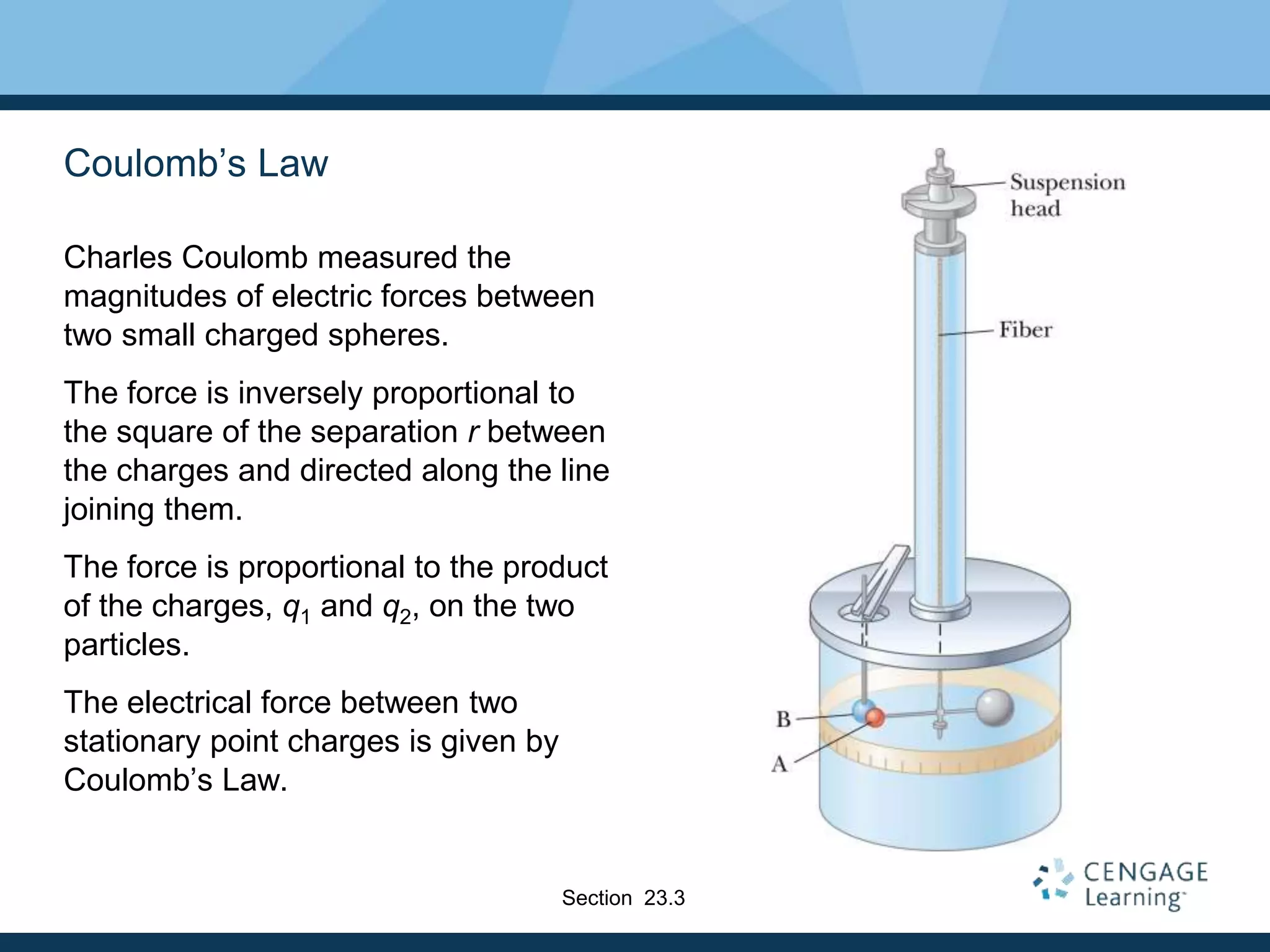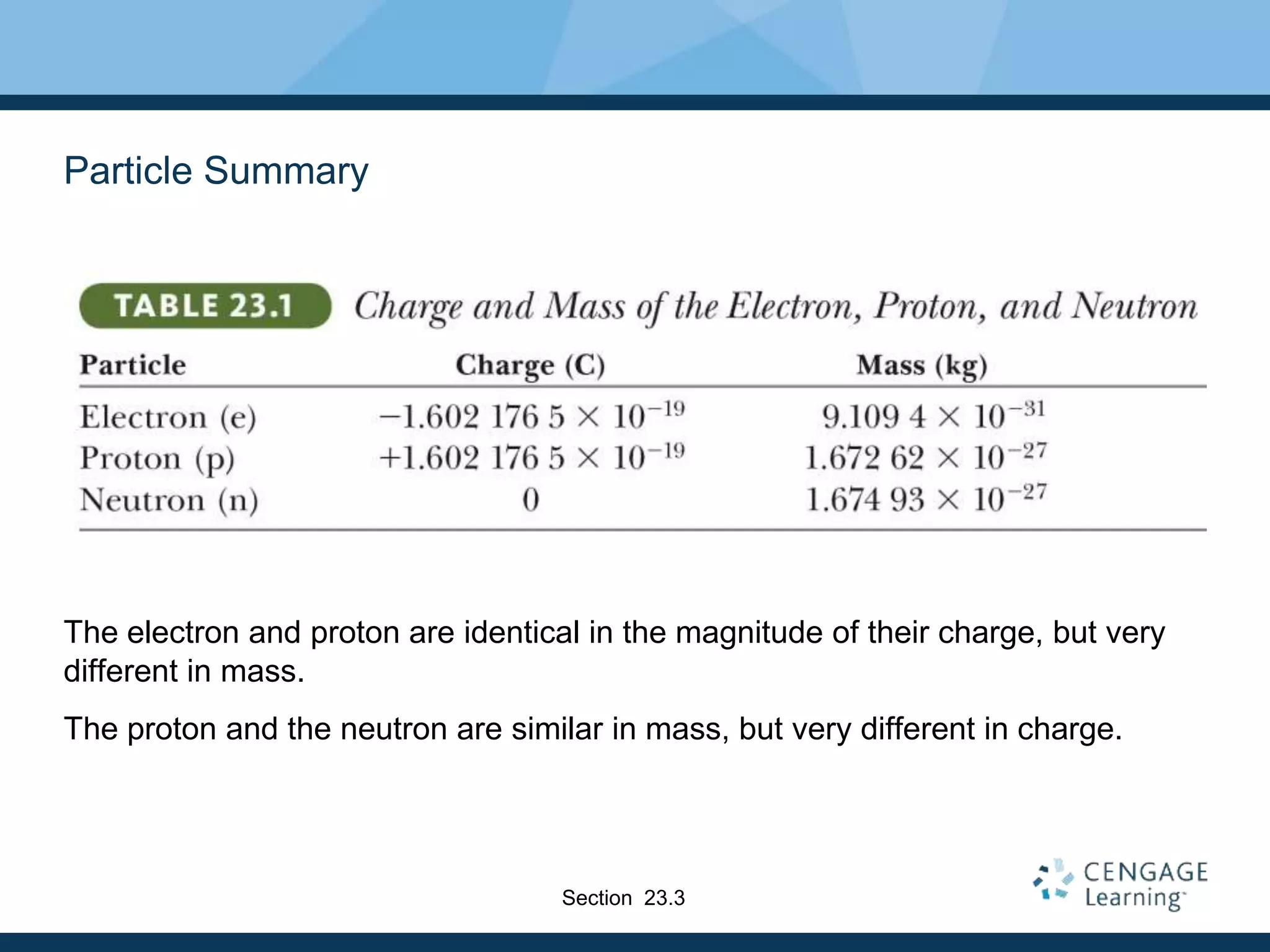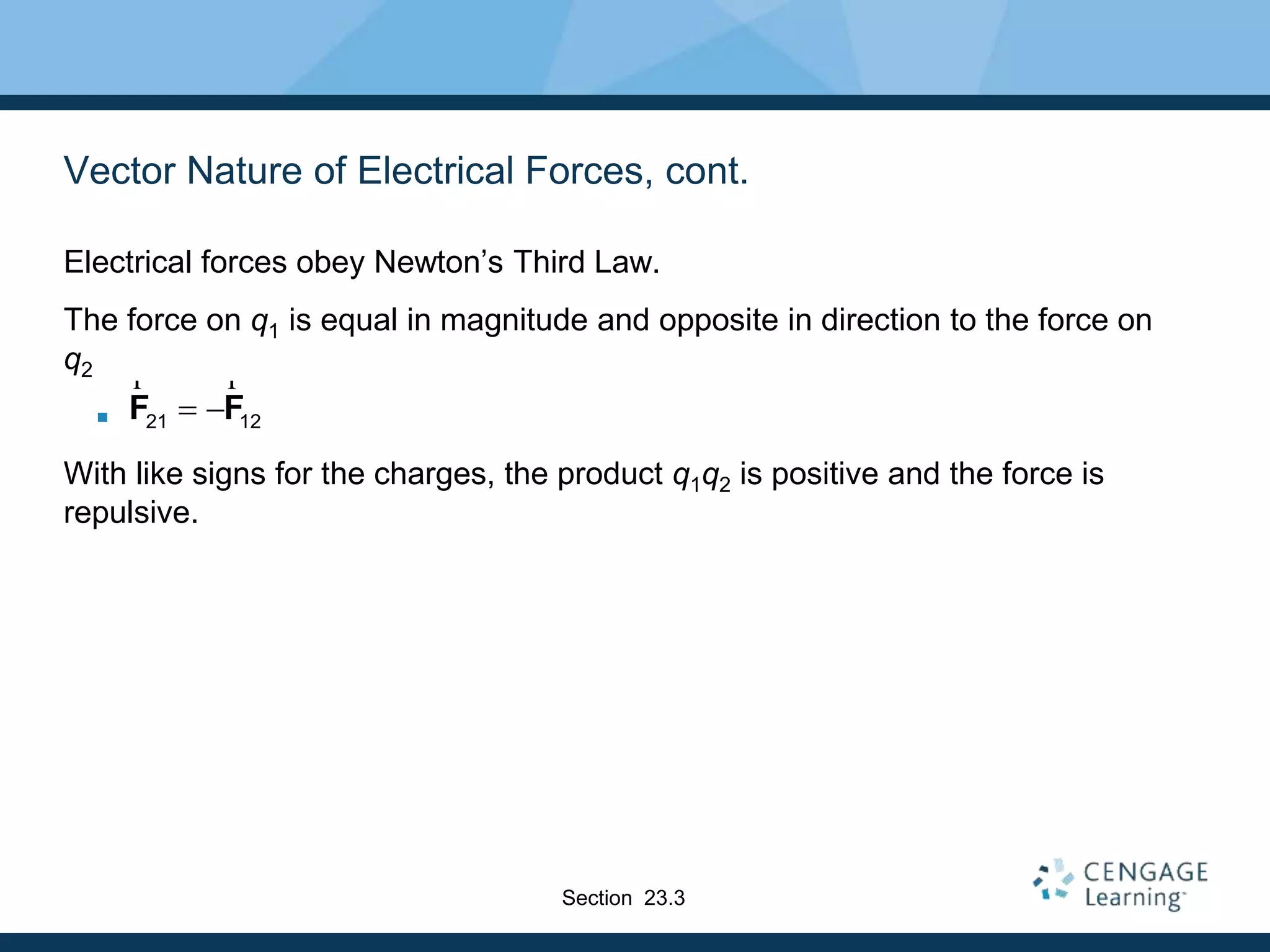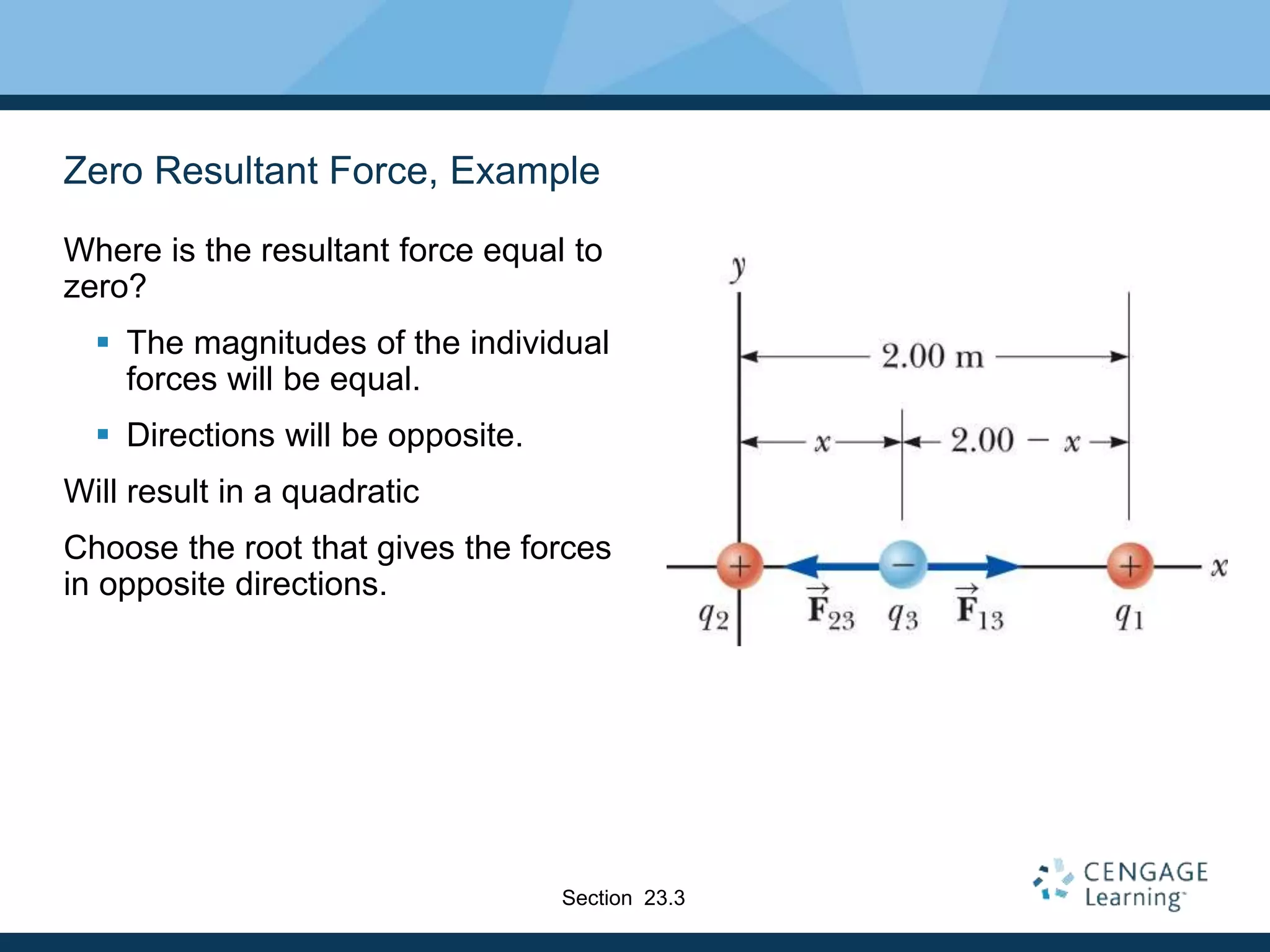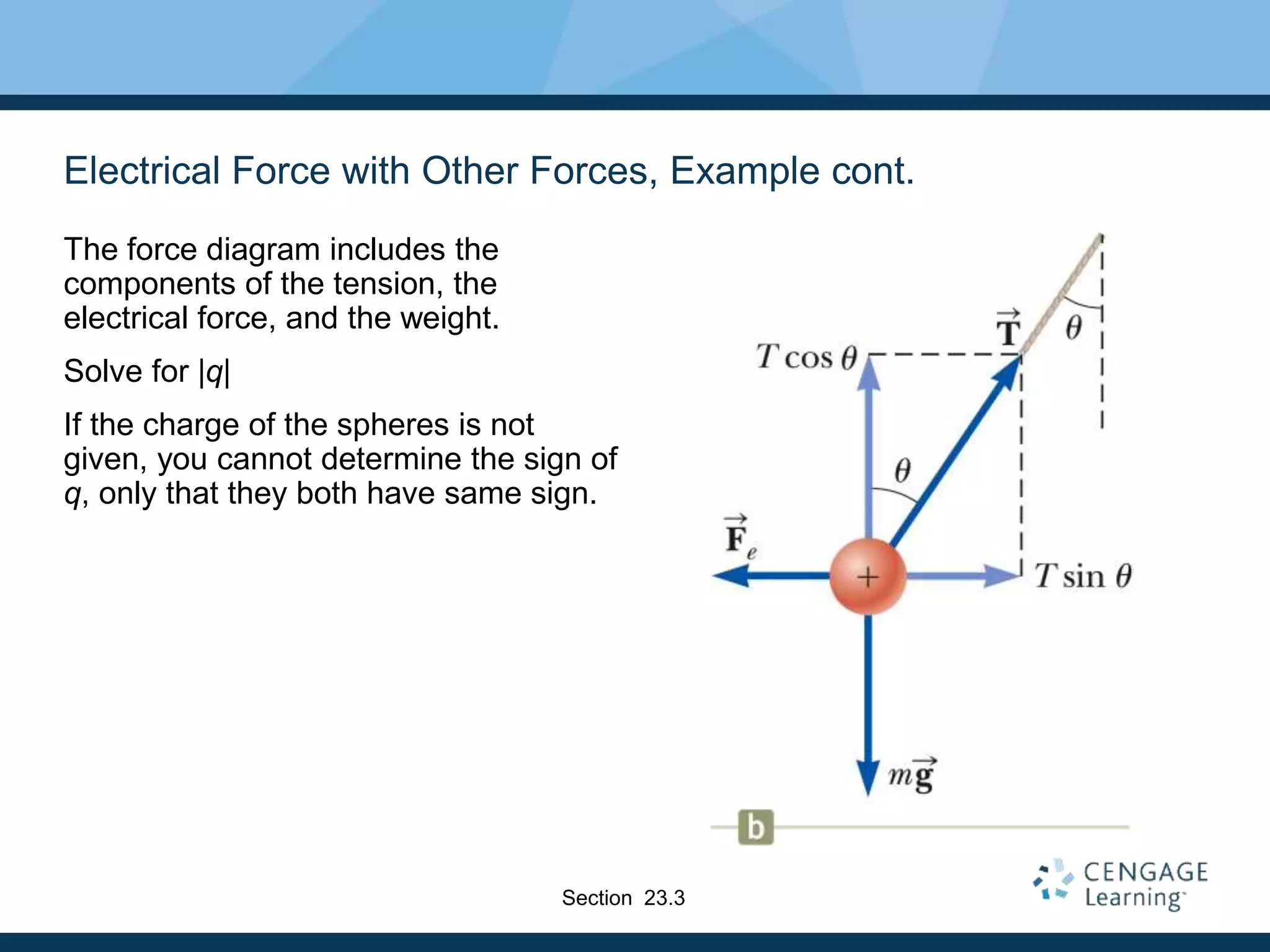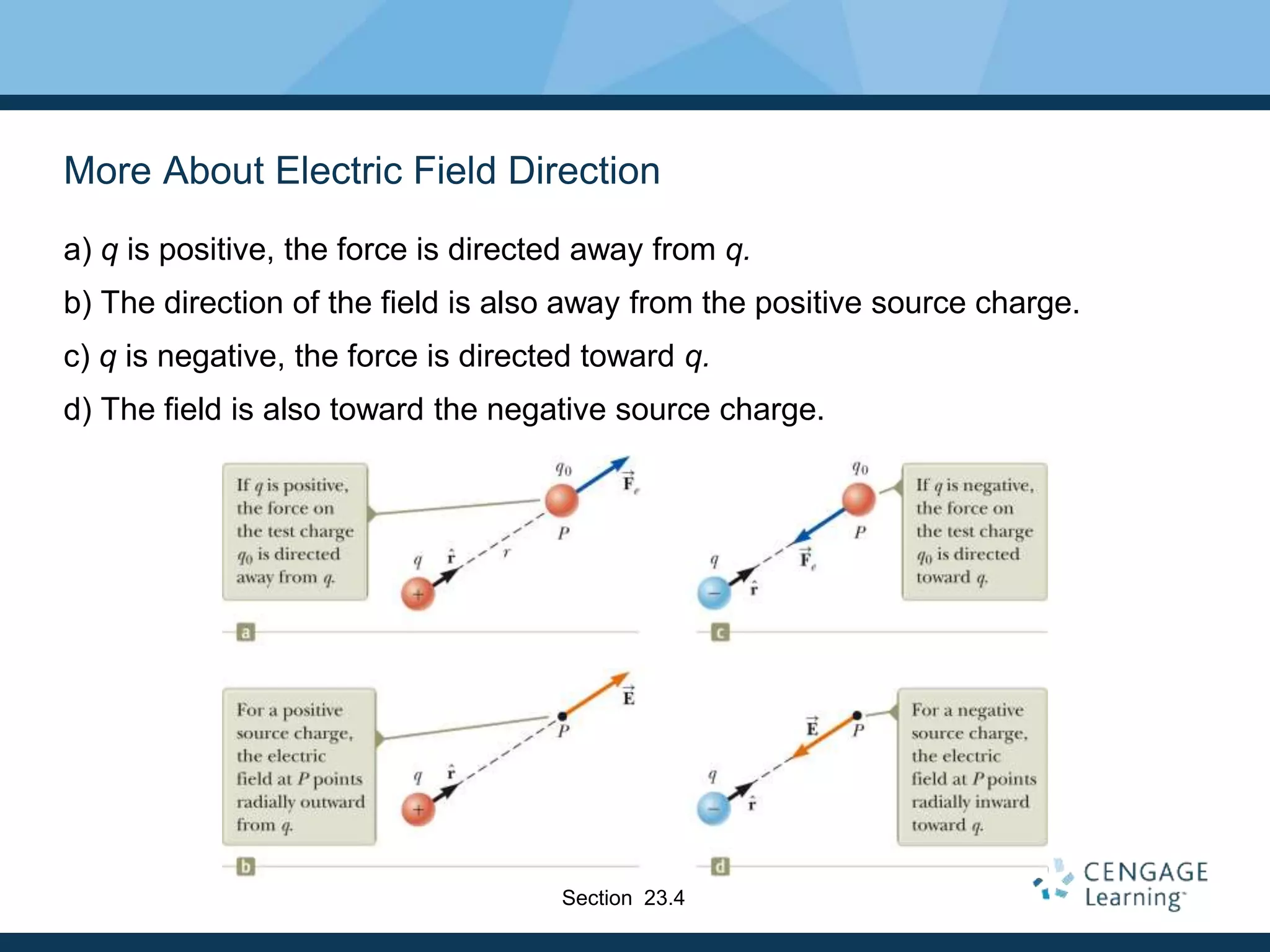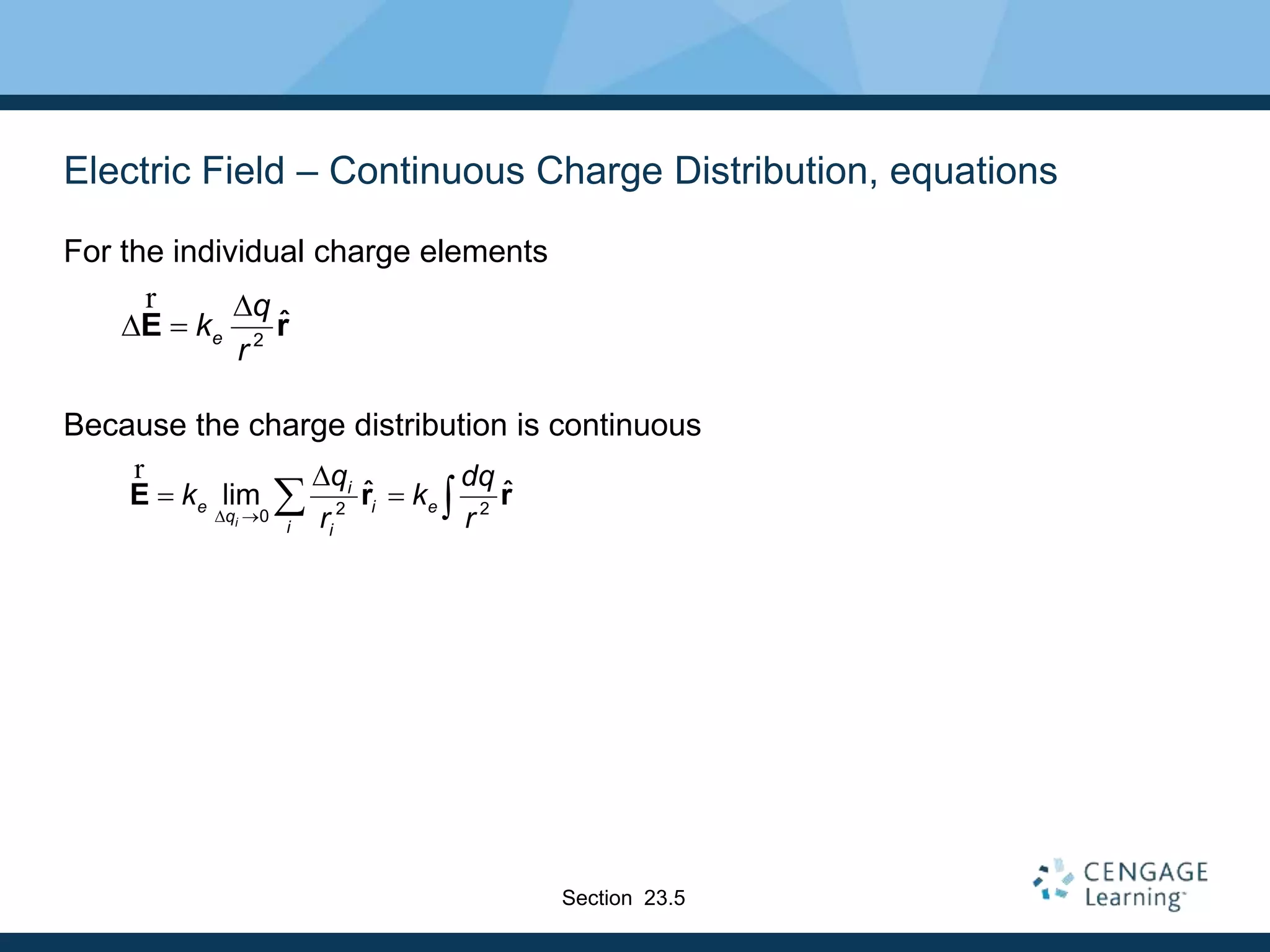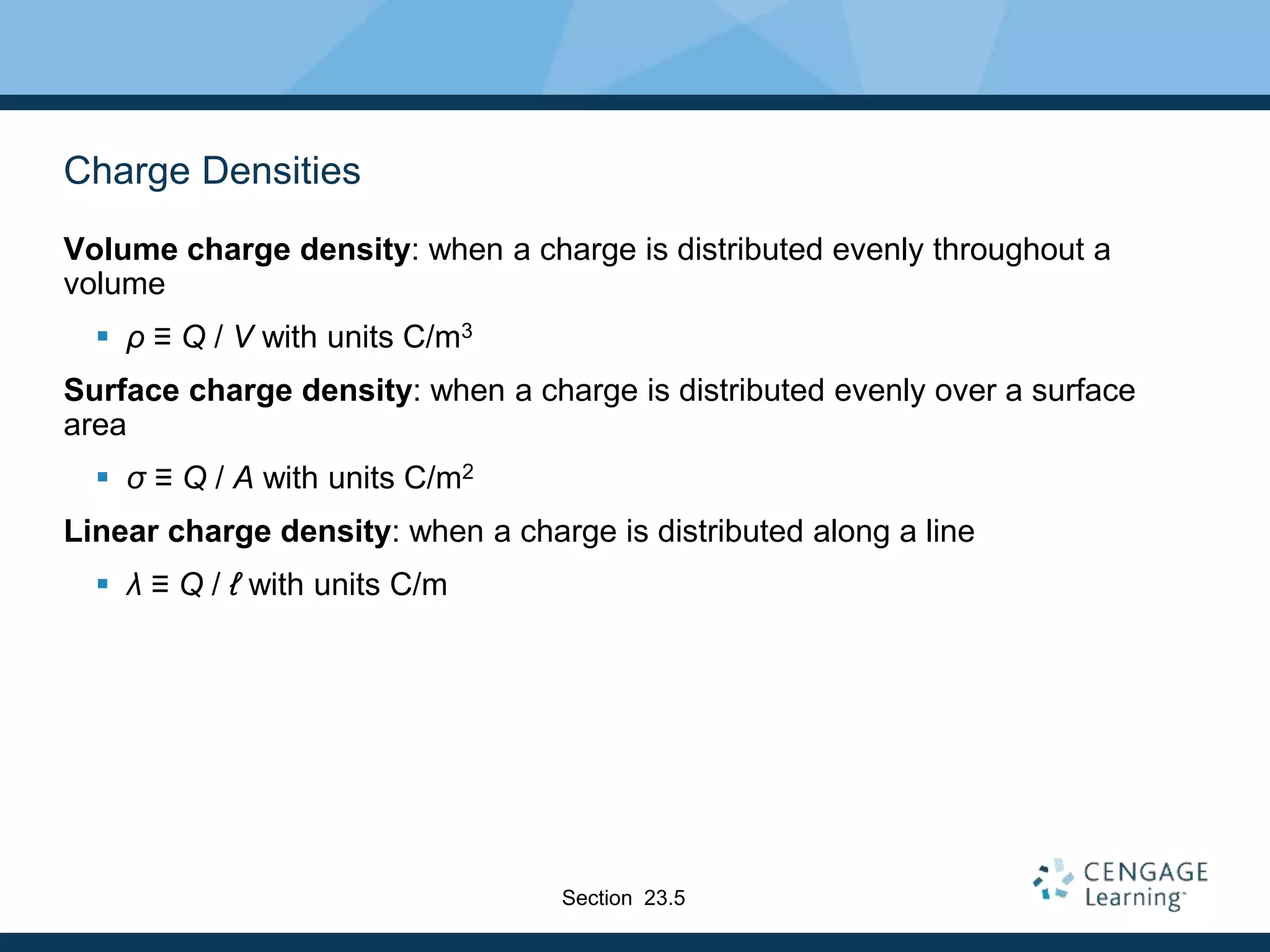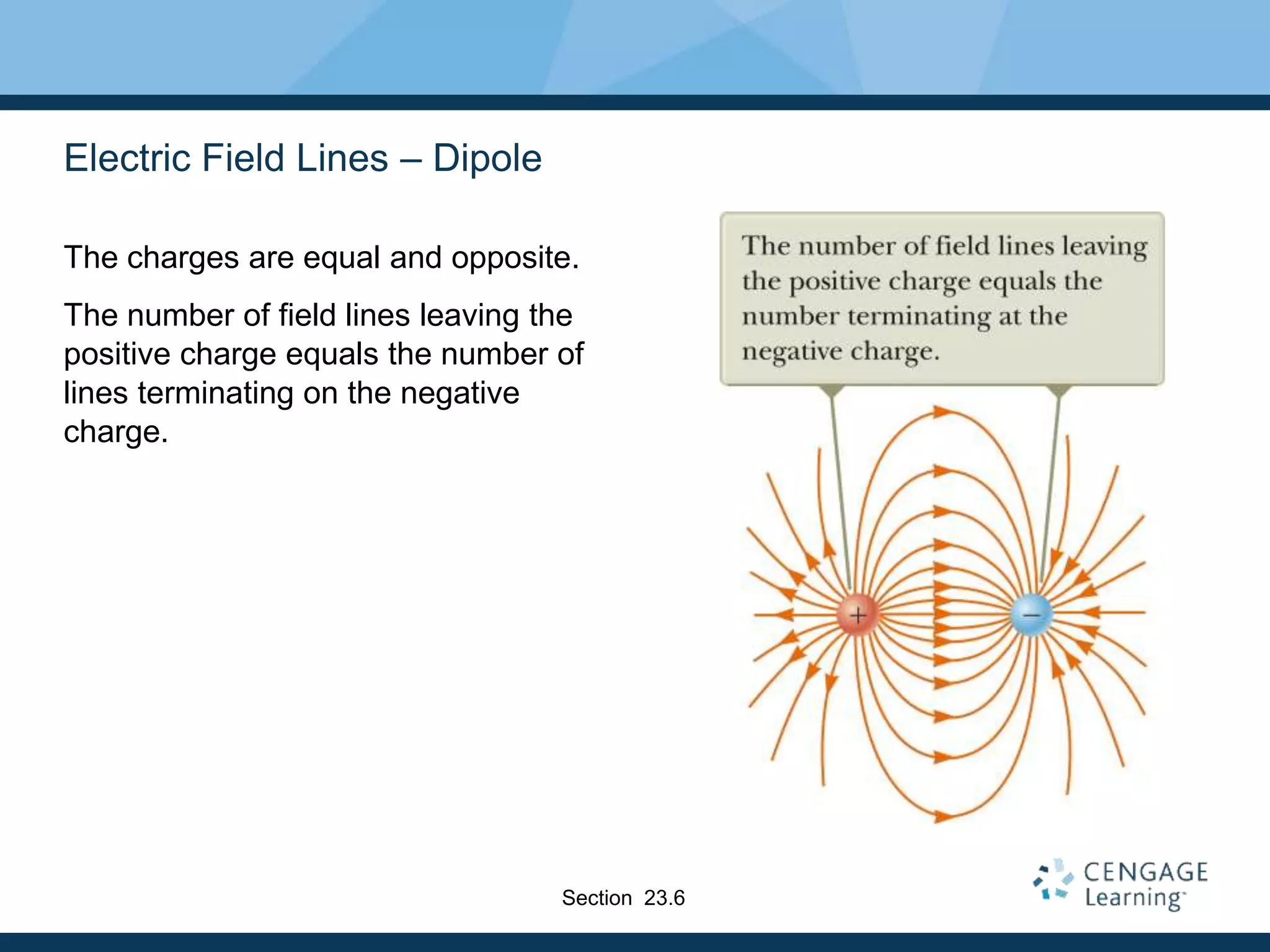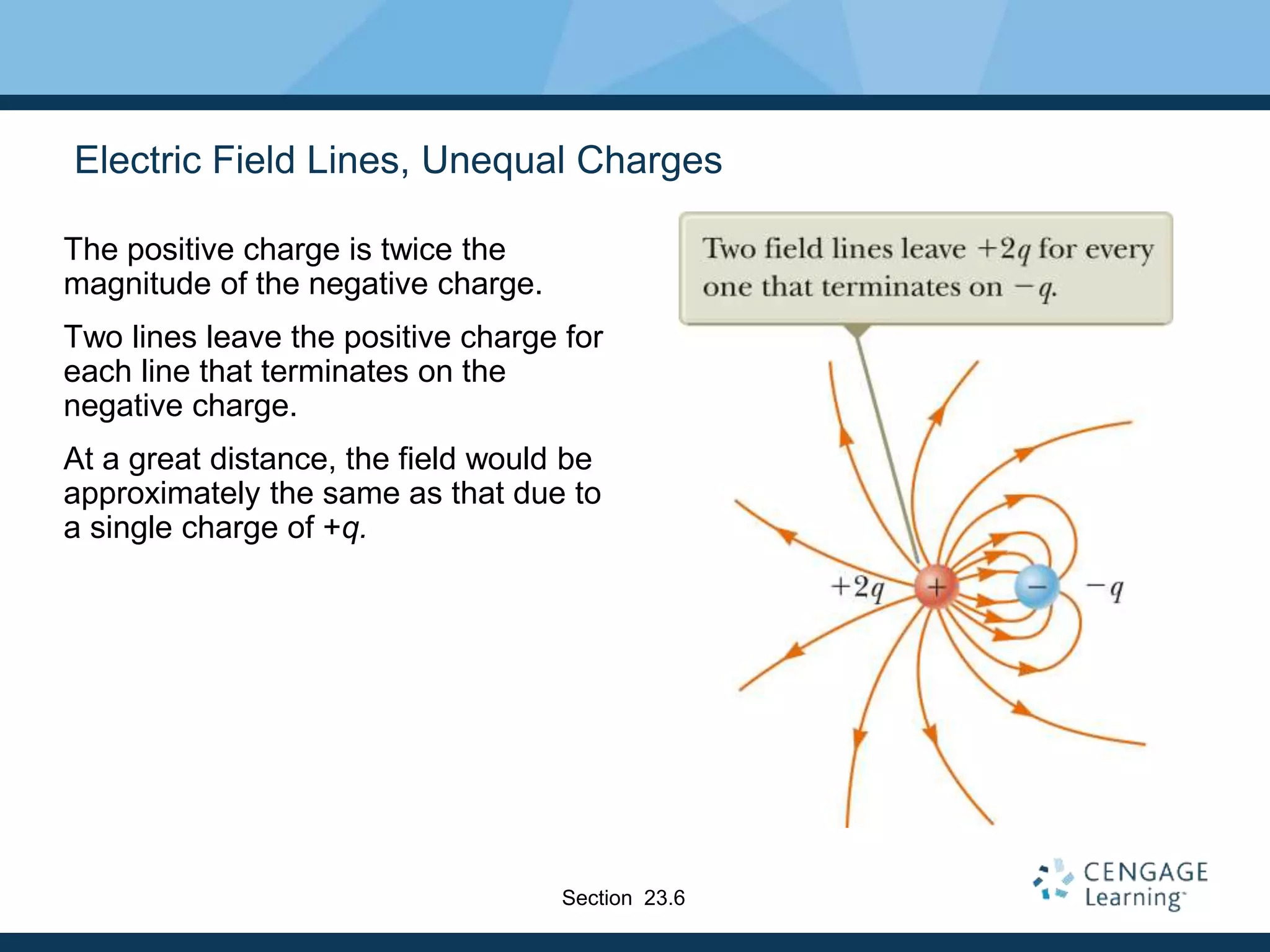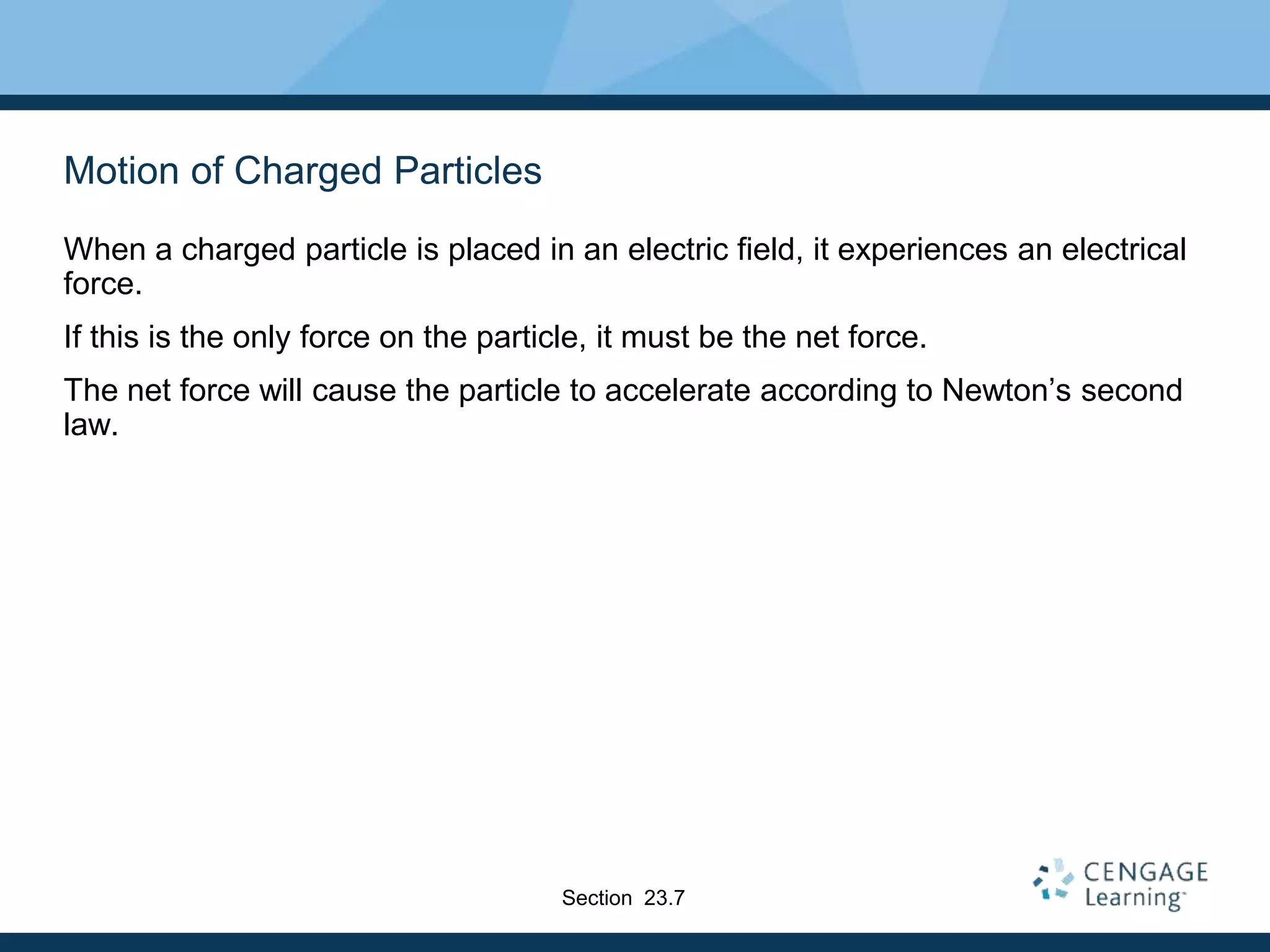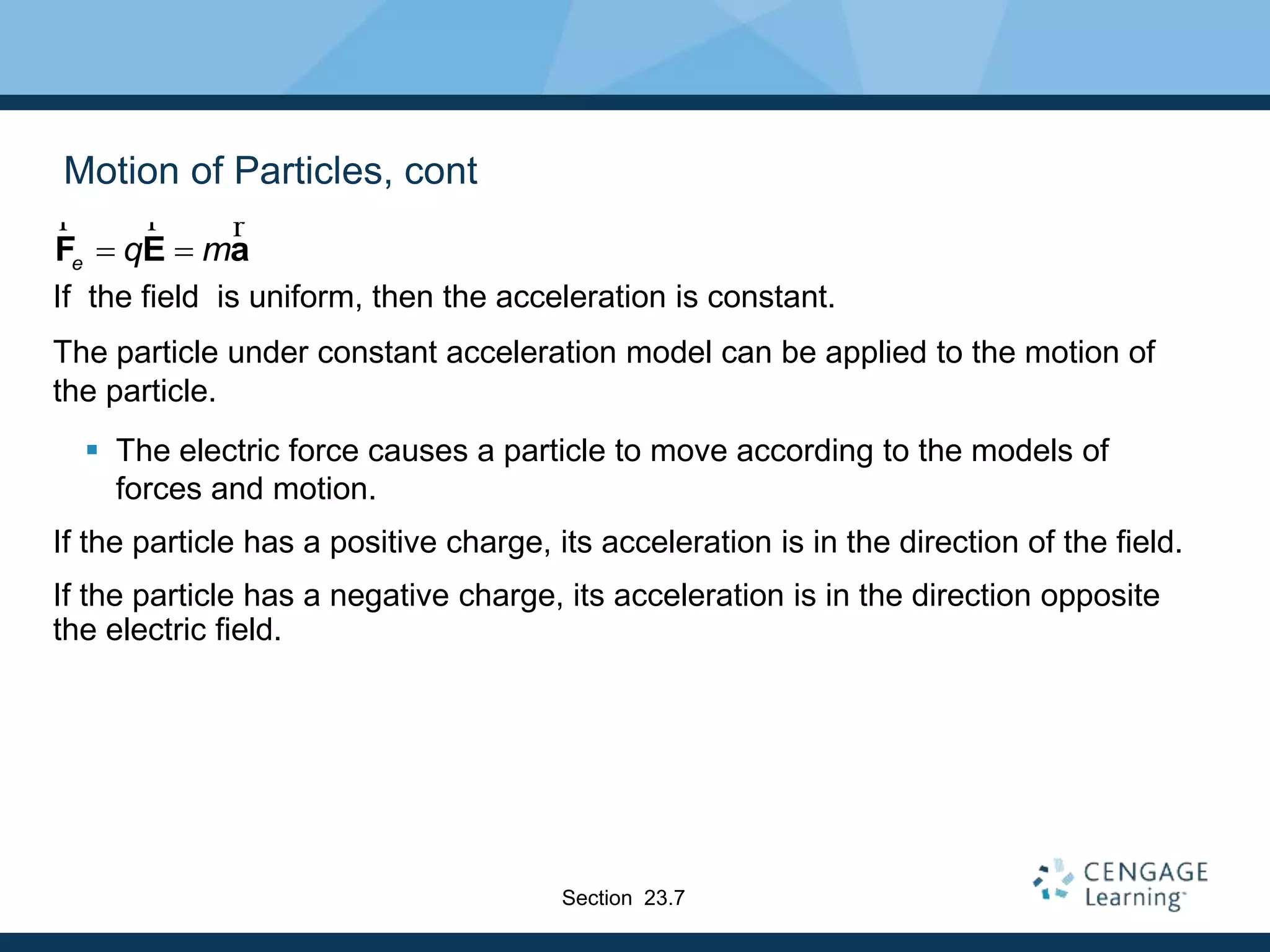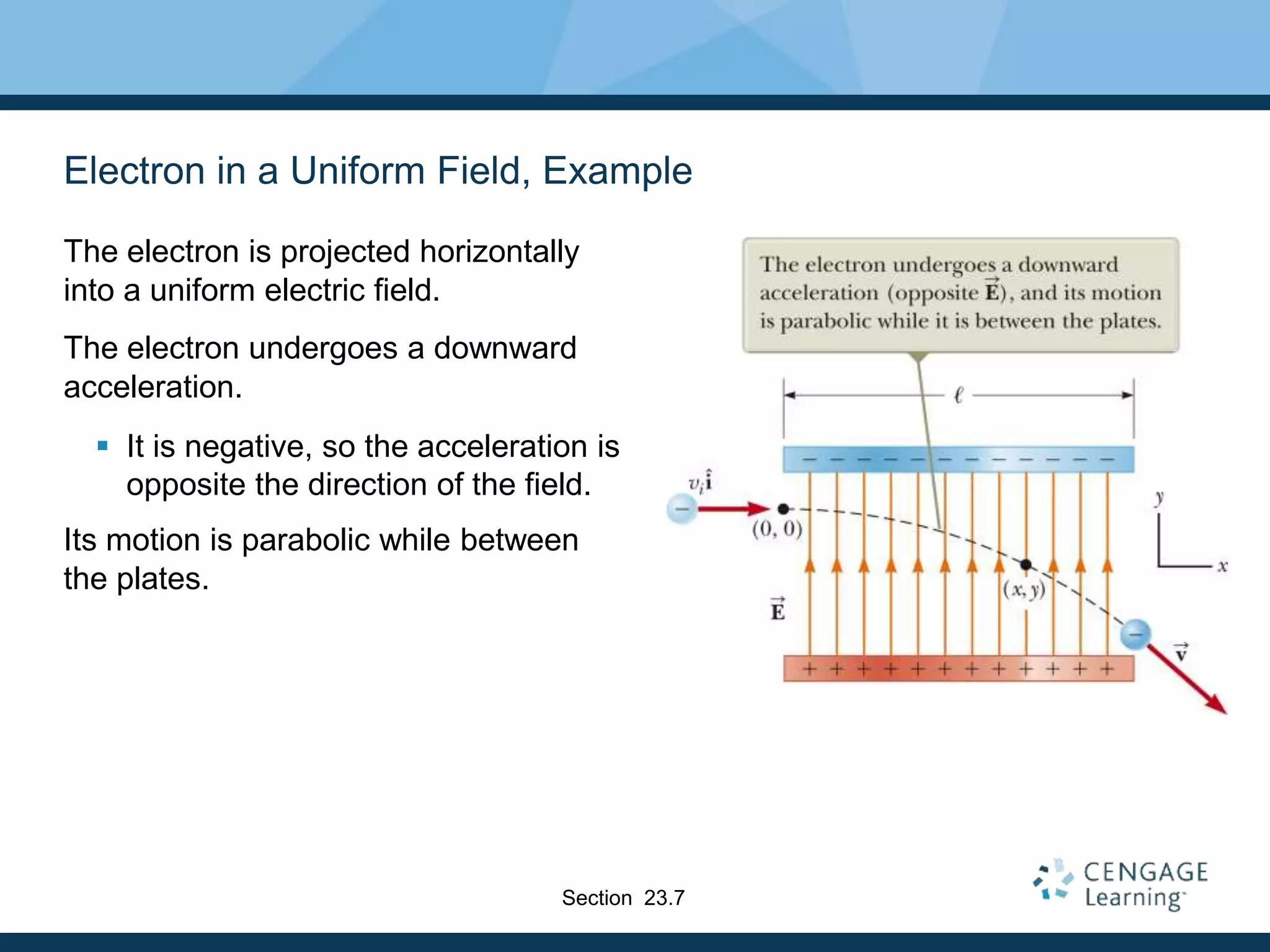The document summarizes key concepts about electric fields, including:
1) Electric fields are defined as the electric force per unit charge exerted by a charged object. An electric field exists in the region around a charged object and any other charges placed in that region will experience a force.
2) The electric field due to a point charge can be calculated using Coulomb's law and decreases with the inverse square of the distance from the charge. The electric field points away from positive charges and toward negative charges.
3) The total electric field at a point due to multiple charges is calculated as the vector sum of the individual electric fields. Continuous charge distributions are treated by dividing the charge into infinitesimal elements.
